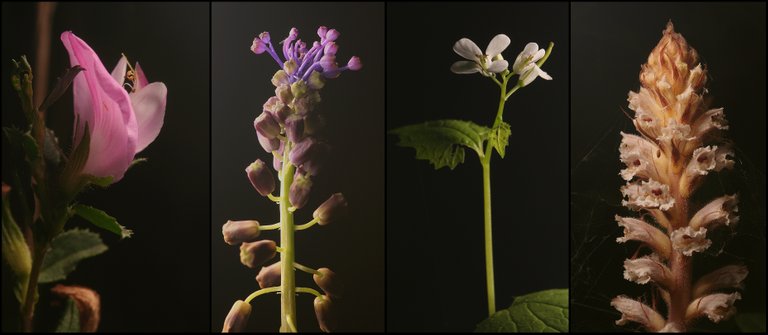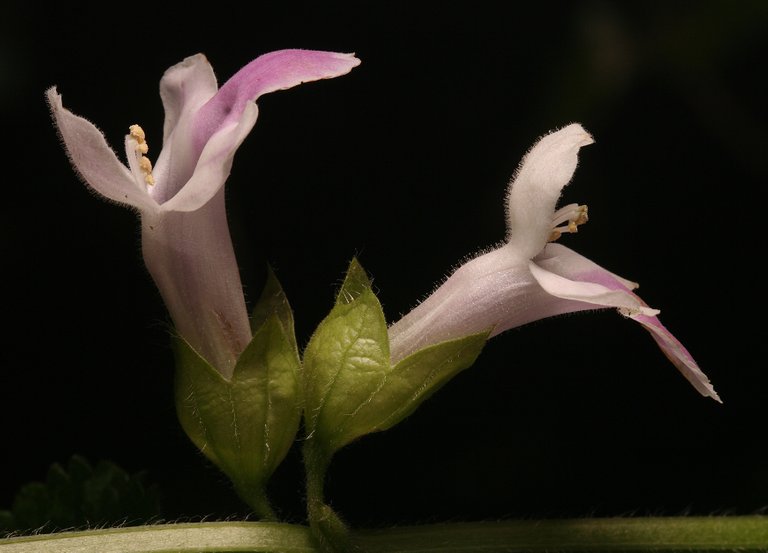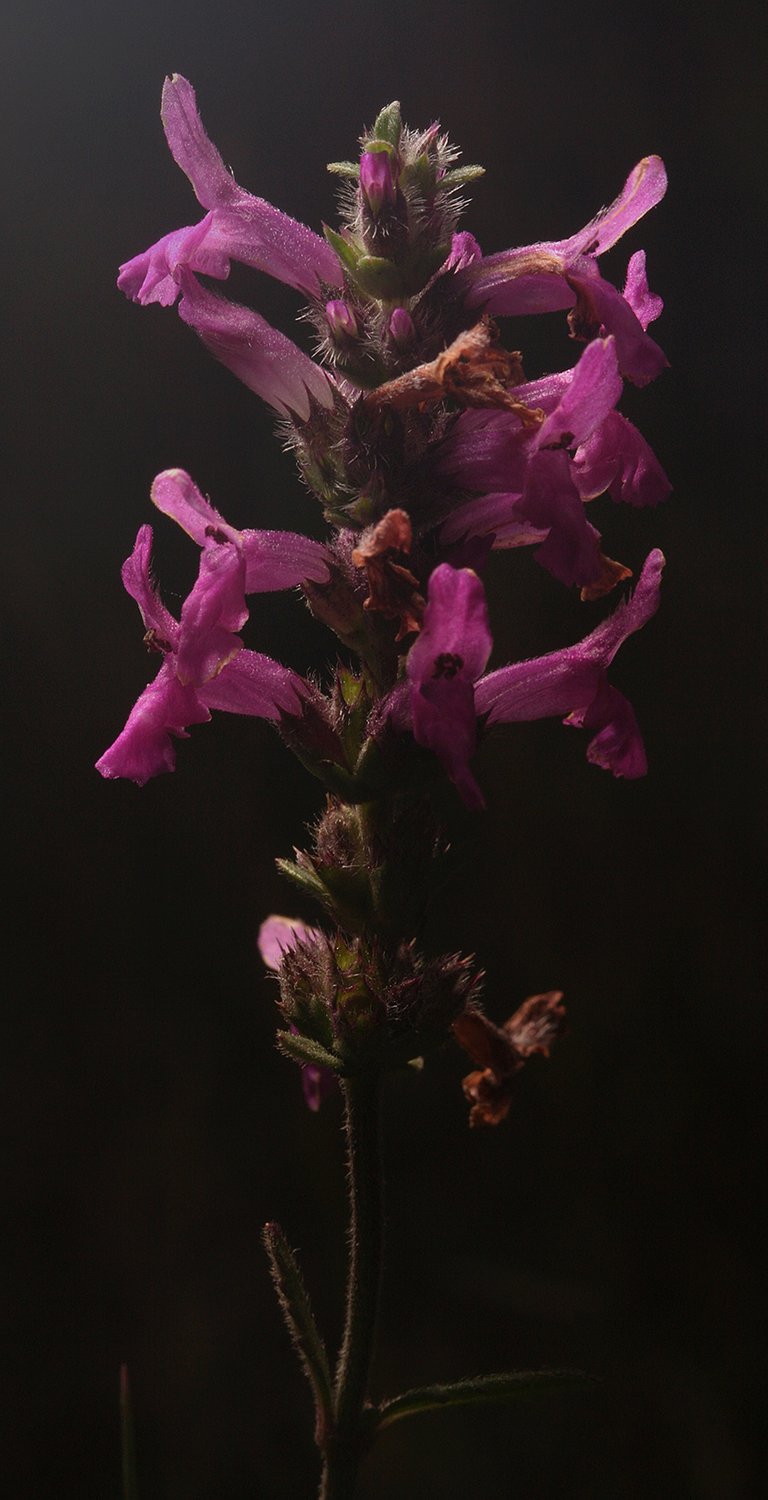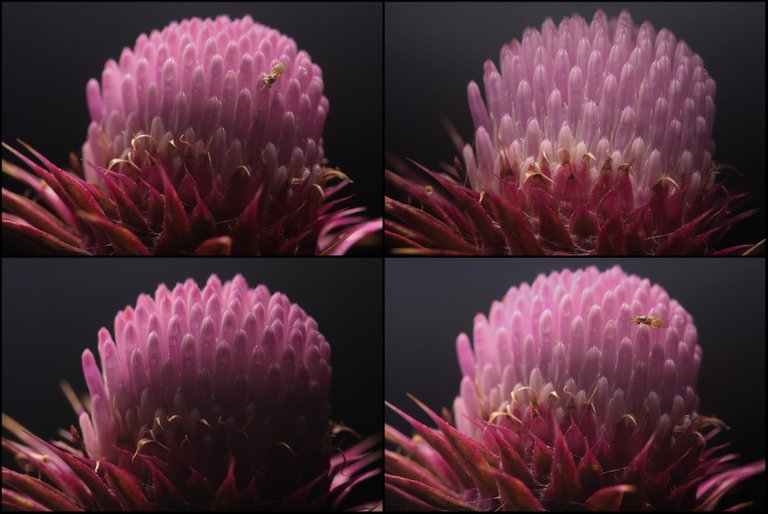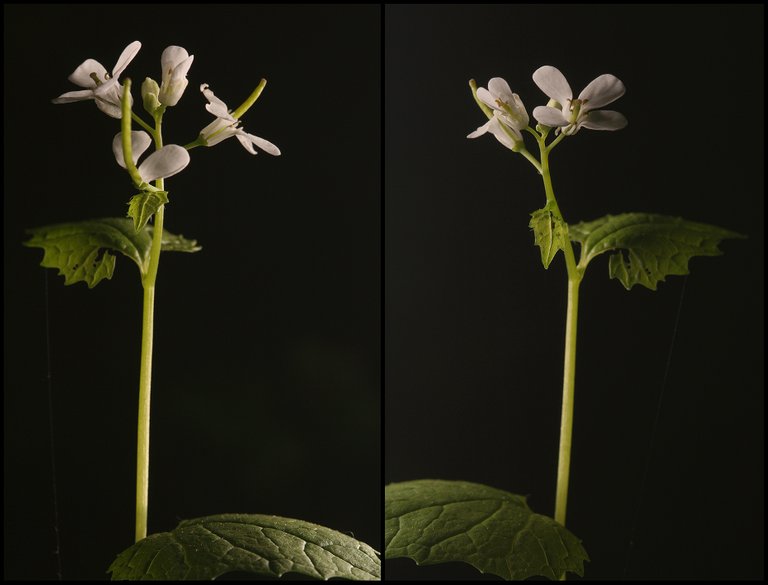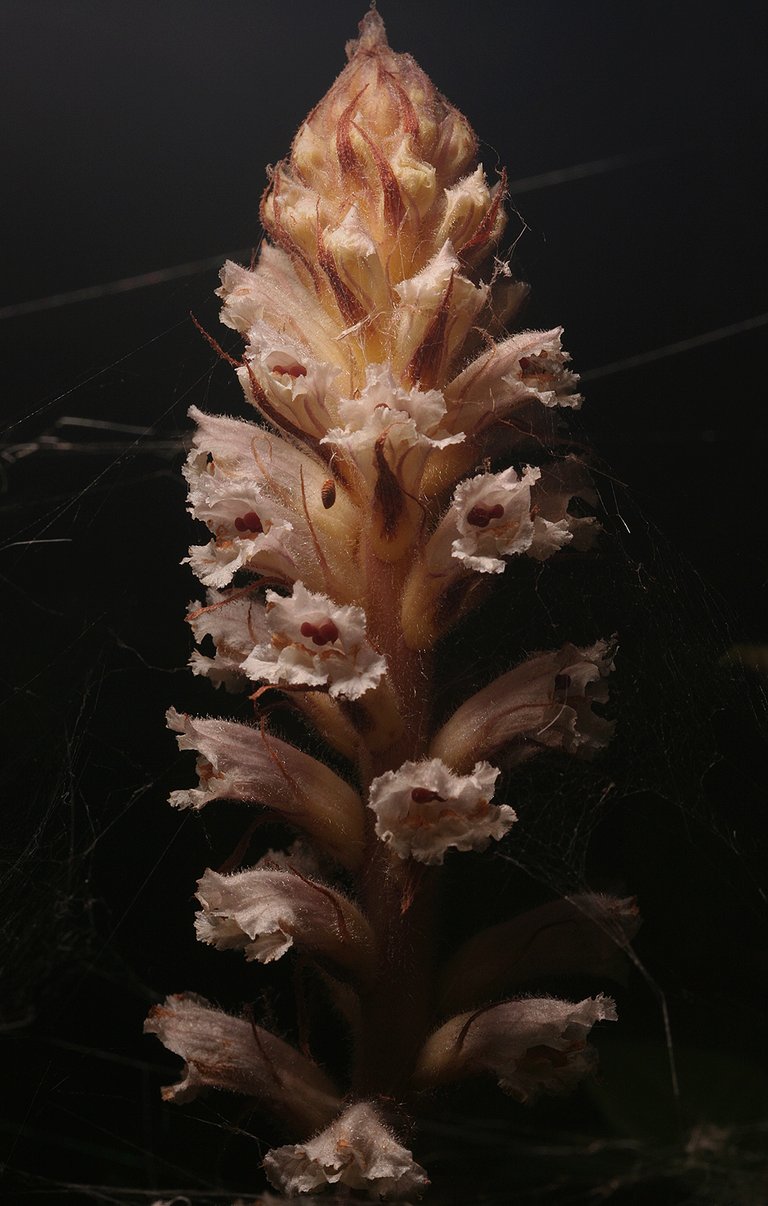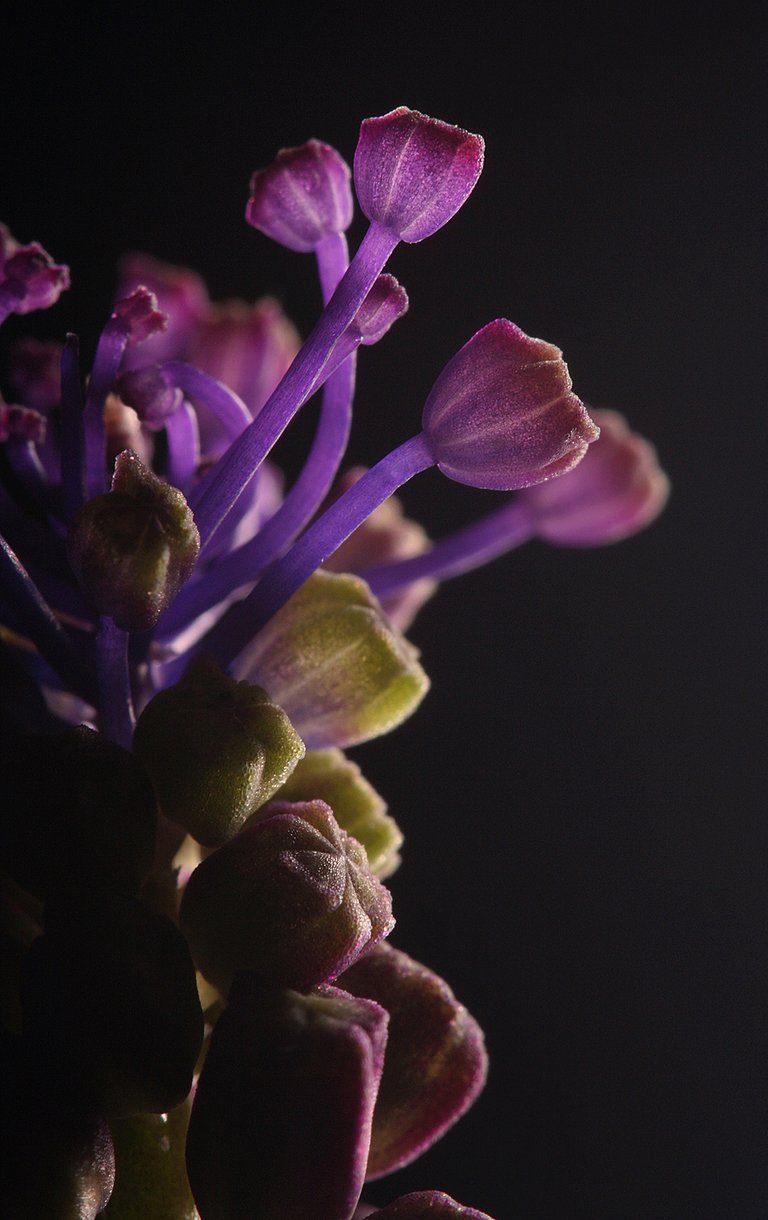You'll see more than ten photographs here, but when it comes to the number of species shown in the post, they are only ten. Ten flowering plants that can be used to celebrate the season of massive blooming, and even more important, to create a fairly short, casual post with some old photographs taken many springs ago.
You can see four of those plants in this opening picture, the rest is coming soon.

This is the Melittis melissophyllum.
I mean, you can see just two flowers of that plant in this and the previous shot. The flowers are the main protagonists of today's post, so you won't see the entire plants, just their flowering parts. And in the case of the species shown in the following set of three photographs ...

... you won't even see the flower in its entirety. This is a portrait of the things in the center of the flower. The pistil and the anthers.
Here you can see the morning dew on one of the petals.
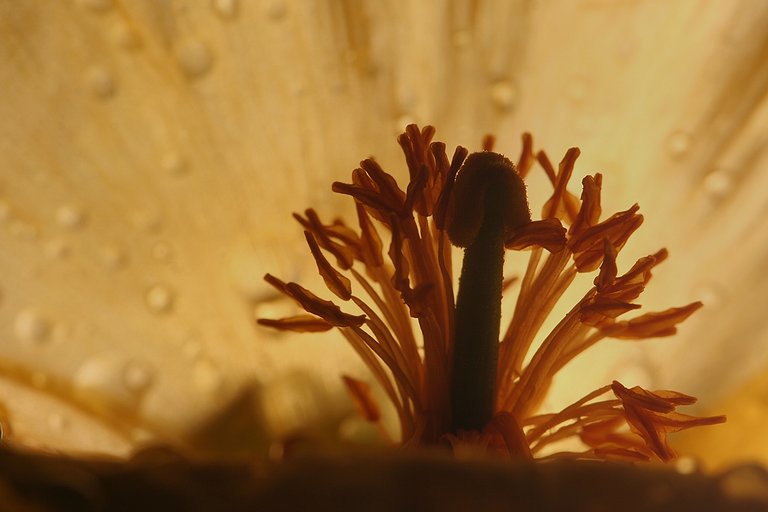
Here you can see the pistil and the anthers photographed in a different light. The plant in question is Glaucium flavum, commonly known as the yellow horned-poppy.
These are the flowers of the Betonica officinalis plant.
Here you can see four portraits of the same Onopordum illyricum flowerhead. Onopordum illyricum is a thistle species. If you enlarge the picture by clicking on it, you may notice a small fly in two of the shots shown here.
Alliaria petiolata is the scientific name of the plant shown in these two shots.
Here you can see two portraits of the Ononis spinosa flower.

This is an orchid. The Ophrys vetula orchid.
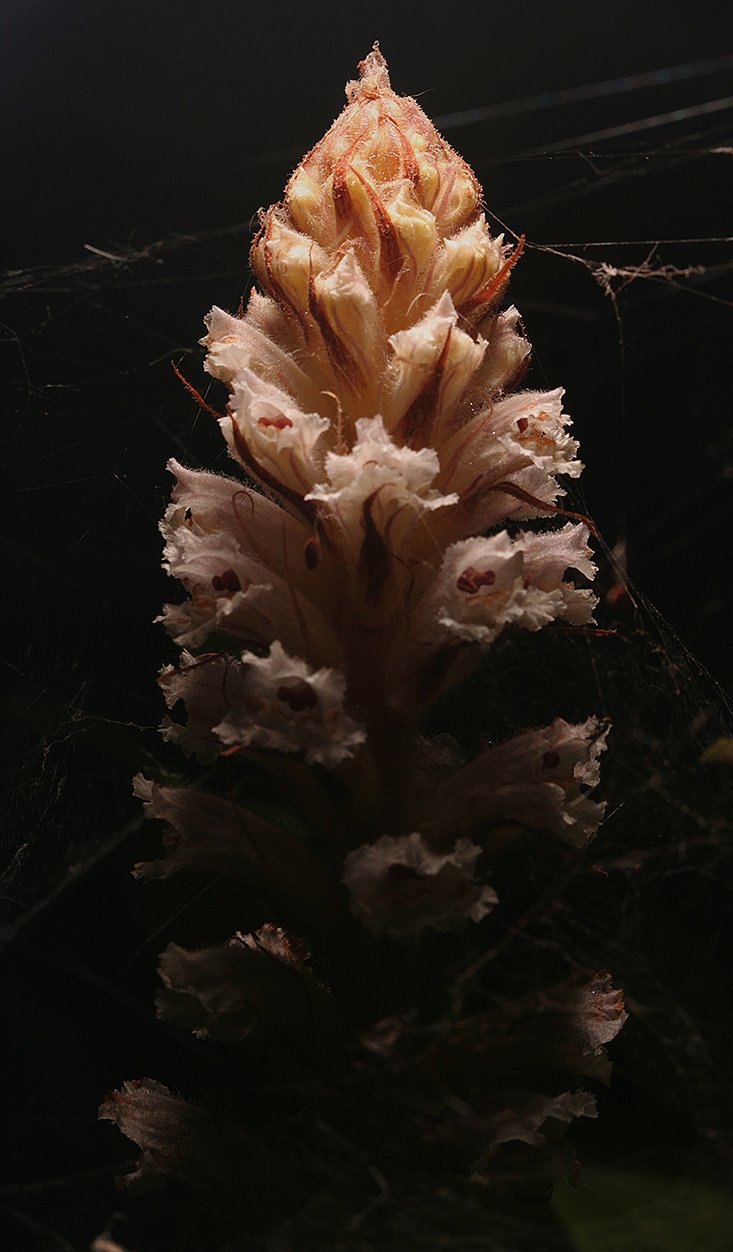
Here you can see the pale flowers of a pale parasitic plant that has no chlorophyll.
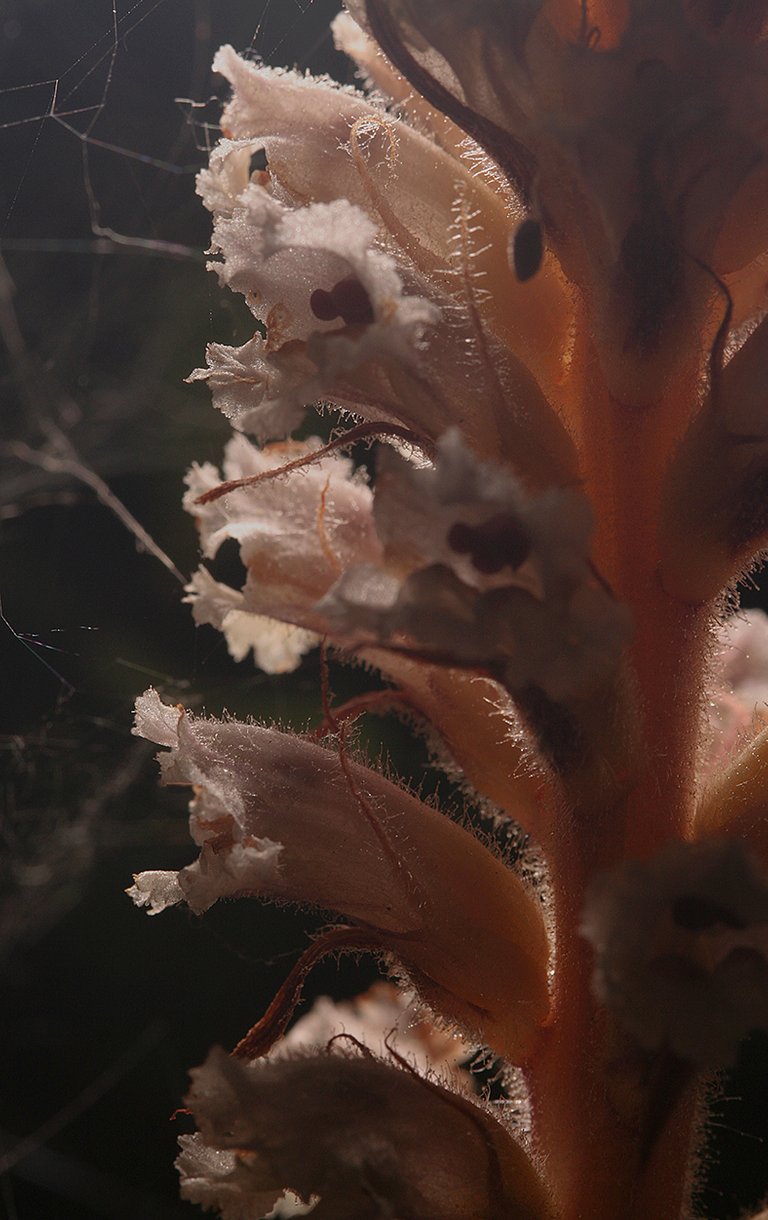
The name of the species is Orobanche amethystea.
Nothing is green on this plant. Orobanche amethystea is totally dependent on other plants for nutrients. Its seeds remain dormant in the soil, often for many years until stimulated to germinate by certain compounds produced by the roots of various green herbaceous plants. Orobanche amethystea seedlings put out a root-like growth, which attaches to the roots of nearby plants.

This is the Muscari comosum.
Here you can take a better, more up-close look at its small blue flowers.
These are all wild plants. In the following photograph ...
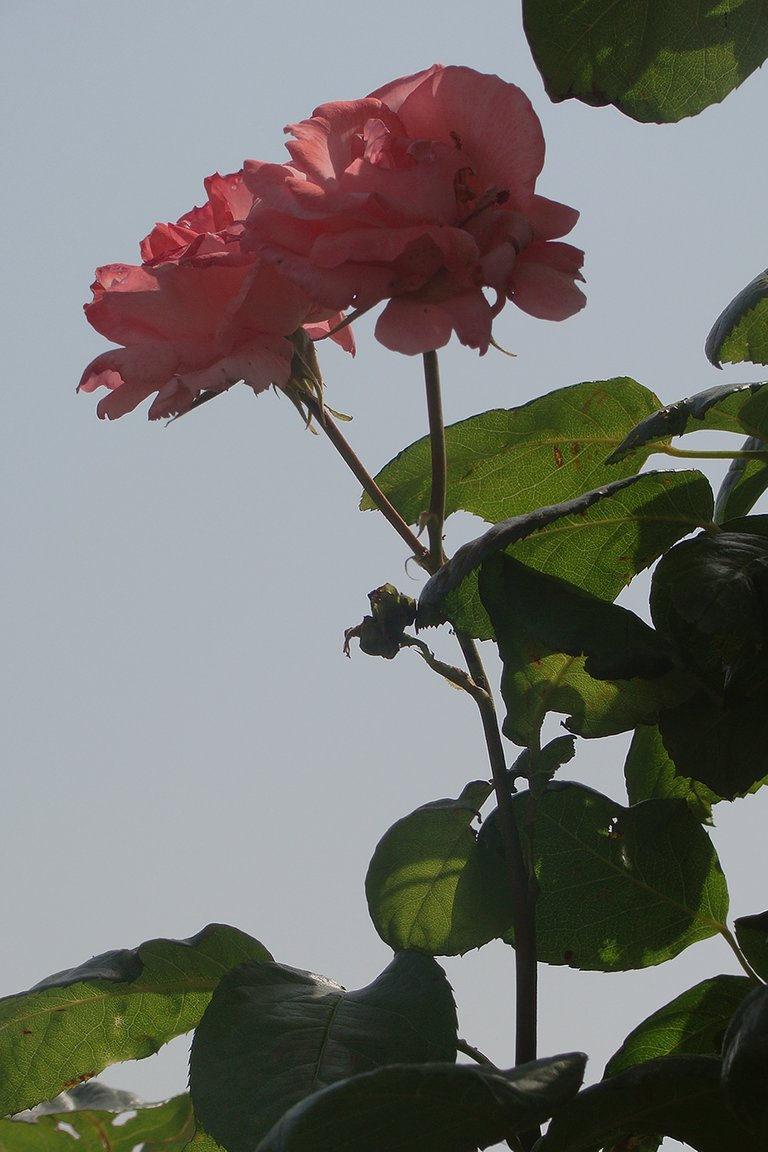
... you can see something different. The roses from my garden.
